|
Non-native invasive plant species are those that originally came from a different part of the world and have been introduced to new area. Most have been purposefully introduced by human activity, often for ornamental use. These species are generally aggressive, and when they escape to a natural environment, can outcompete native plants for the natural resources that they need to survive: light, space, water and food. Here are ten common invasive plant species that you may encounter along the C&O Canal, or in your own back yard: 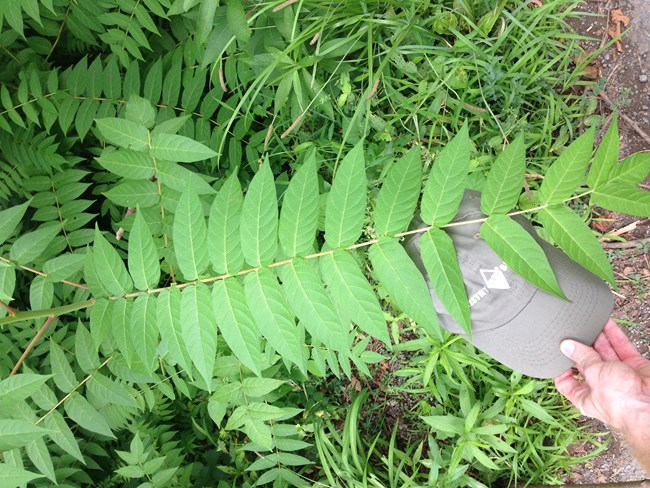
NPS Photo Originally from China and Taiwan, this tree can reach up to 70 feet in height. Since it is highly adaptable to drought, different soil types, and disturbance, it has a wide growth range and can be commonly seen in the Park. Tree-of-heaven can either have male or female flowers, and mature females will produce over 100,000 seeds, or samaras, thus allowing this species to spread rapidly and colonize new areas.
Lesser Celandine/Fig Buttercup (Ficaria verna) Lesser celandine, also known as fig buttercup, originated as an ornamental plant imported from Europe. It's glossy butter-yellow flowers made it very popular commercially, and have since allowed it to become established across different regions. Lesser celandine will emerge in moist soil areas in the winter in advance of many native plant species and spread rapidly to create a blanket of groundcover. This growth habit gives it great competitive advantage and displaces many native plant species.
Japanese Knotweed (Fallopia japonica) Commonly seen near bodies of water, Japanese knotweed is an invasive plant species that poses a large threat to stream banks and riparian habitats. This is due to its ability to survive flooding events that might wipe out native species, and then quickly take over the new open space, forming dense monocultures. Japanese knotweed was originally found in Eastern Asia, and was brought to the U.S. to be used as an ornamental plant. They can grow up to 10 feet tall, and are extremely persistent since they have the ability to spread and regrow vegetatively through their roots, or rhizomes.
Wineberry (Rubus phoenicolasius) Wineberry, a species of small shrub, is easily identifiable by its arching stems that are covered with spiny red hairs. This species was imported from eastern Asia because the raspberry-like berries it produces are considered a delicacy. However, wineberry will form dense shady thickets, displacing many native plant species. Wineberry can be seen in the C&O Canal in some open woods, and along forest, stream, and wetland edges. 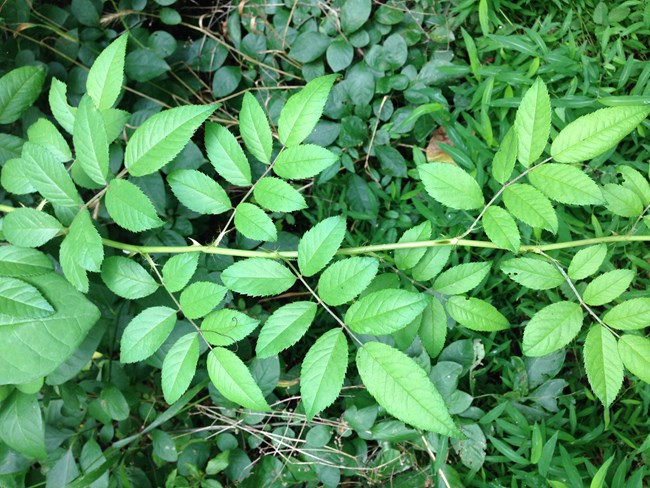
NPS Photo Originally introduced from eastern Asia, to be used as a "living fence", multiflora rose has since become a very aggressive invasive species. This is partly due to birds eating their fruit and then dispersing them over a wide range. It has very prickly thorns along its arching stems, and will form white-to-pink flowers in the spring and summer. Since it can tolerate many different soil conditions, multiflora rose can be found invading open fields, forests, wetlands, and many other habitats. This species will form dense thickets that overtake many native plant species and alter habitat structure. 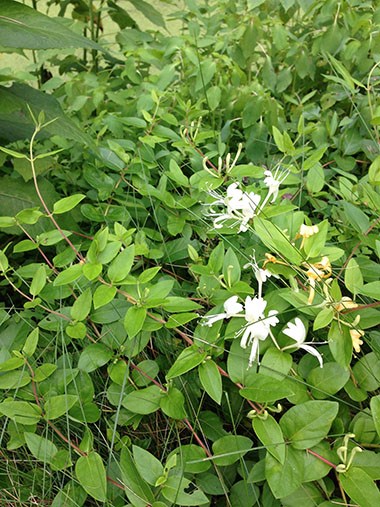
NPS Photo Japanese honeysuckle was imported from eastern Asia as an ornamental vine. Since introduction, it has become a very well established invasive species due to its adaption to a wide variety of habitats. The flowers are very recognizable, as they are bright whitish-yellow and have an attractive fragrance. In full sun, Japanese honeysuckle will entangle the native vegetation it grows on, thereby smothering the host plant by blocking sunlight. 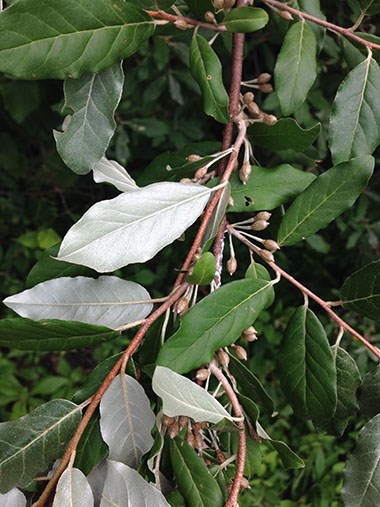
NPS Photo Autumn olive is a large shrub that stands out due its unique leaf coloring; with glossy silver undersides. Originating from eastern Asia, this invasive was introduced to be used as both an ornamental and as a windbreak for degraded lands. Autumn olive is very drought tolerant, and can be found in many habitats such as grasslands, open fields, and other disturbed areas. Autumn olive is capable of increasing the level of nitrogen in soil around the roots, offsetting the nutrient balance that some native plants depend on to grow. It will also displace native plant species by creating dense shaded areas. The flowers of this species are very aromatic and pale yellow in color, followed by abundant reddish-brown fruit. 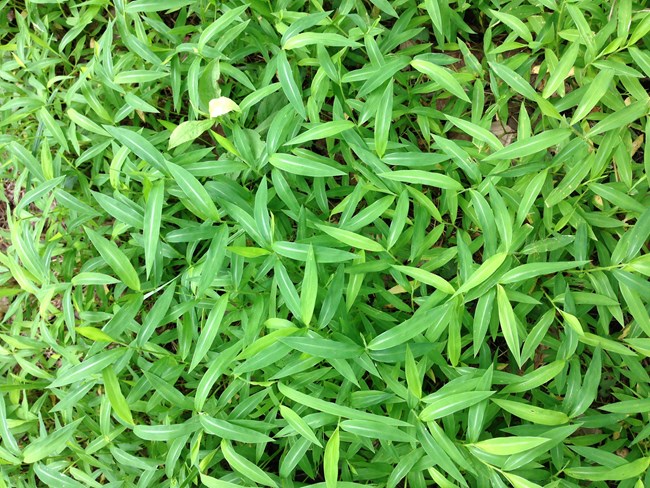
NPS Photo Japanese stiltgrass is one of the most common invasive plant species in the Park because it quickly spreads in disturbed areas, creating very dense patches. One of its outstanding characteristics is the shiny white line, known as a midrib, in the blade of the grass, which similar species do not have. Japanese stiltgrass originates from India and eastern Asia, and was introduced to the U.S. through its usage as packaging material for porcelain. Due to its ability to spread quickly, Japanese stiltgrass can easily create a monoculture, preventing many native plant species from having any space to grow.
Garlic Mustard (Alliaria petiolata) Garlic mustard was introduced to the U.S. from Europe, initially for food and medicinal purposes. Presently it can be found along the Park in floodplains, forest edges, and roadsides. This species is biennial, meaning it has a two-year life cycle. The first year it grows low along the ground, with kidney-shaped leaves. The second year it produces single flowering stalks 1-4 ft. high, which usually die back by late spring. Garlic mustard will displace many native wildflowers, which in turn will displace many butterfly species that depend on the wildflowers to host their larva. Deer often eat the native plant species around garlic mustard but avoid the plant itself, this allows garlic mustard to spread into the grazed areas.
Japanese Barberry (Berberis thunbergii) Brought to the U.S. from Japan, Japanese barberry is a popular ornamental shrub, known for its gold or maroon fall colored leaves. Small, straight spines line the branches, with abundant pale yellow flowers and a bright red berries. Japanese barberry spreads easily because it can tolerate shade, severe drought, and extreme winters. This invasive species can be found in closed canopy forests, and along open woodlands, wetlands and fields. Take caution when you are around these plants as the spines may be prickly, and the growth habit may provide favorable habitat for ticks. |
Last updated: May 4, 2020
